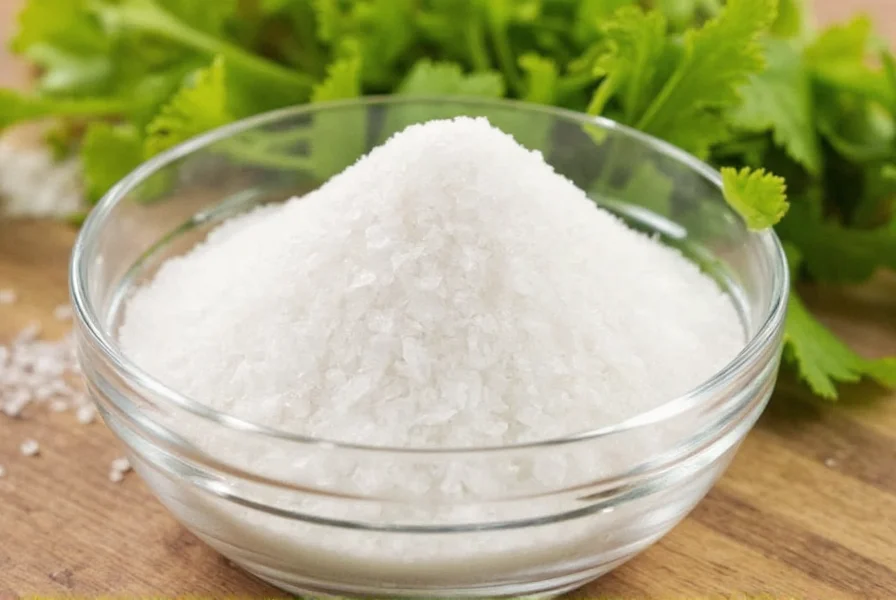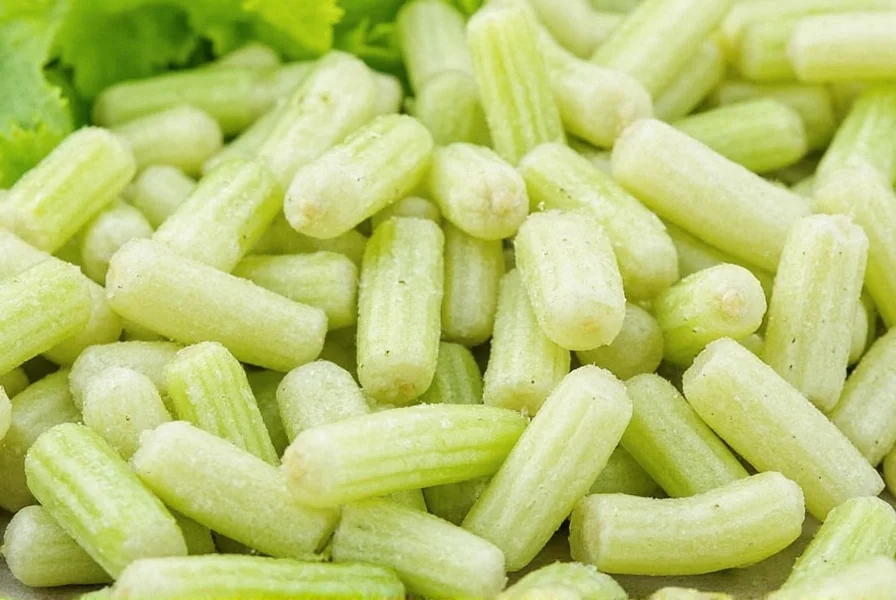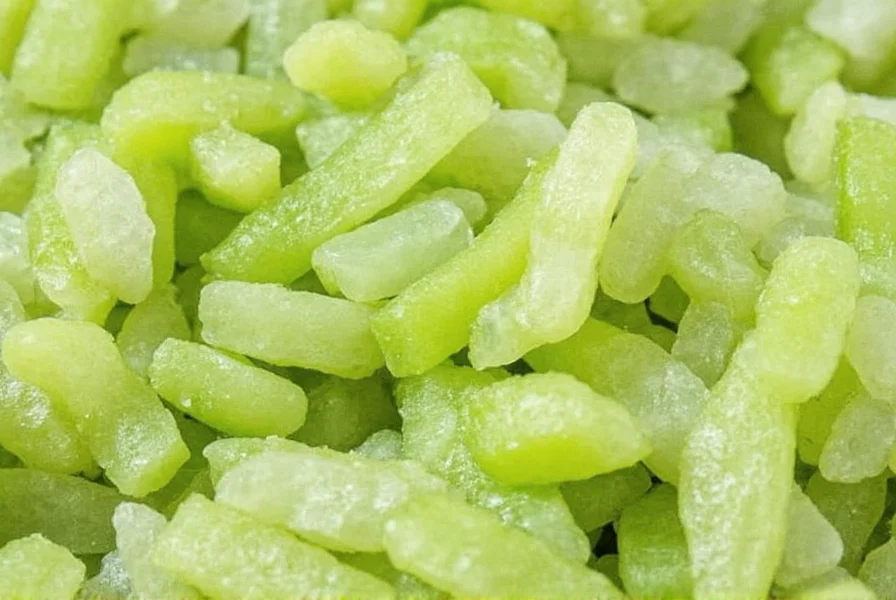Celery salt isn't just another pantry staple—it's a culinary secret weapon that transforms ordinary dishes into restaurant-quality creations. This simple blend of salt and ground celery seeds delivers a complex flavor that regular salt can't match. Understanding how to use celery salt properly can elevate your cooking game significantly.
What Exactly Is Celery Salt?
Celery salt consists of fine table salt blended with ground celery seeds, typically in a 2:1 ratio. Unlike celery seed alone, which has an intense, almost bitter flavor, celery salt provides a balanced seasoning that enhances without dominating. The celery seeds contain essential oils like limonene and apiol that give this seasoning its distinctive aroma and taste.
Commercial celery salt often includes anti-caking agents like calcium silicate to prevent clumping. Some premium versions may use sea salt or kosher salt as the base instead of regular table salt, offering slightly different flavor profiles and textures.
Top Culinary Applications of Celery Salt
Chefs value celery salt for its ability to add layered flavor with minimal effort. Here's where this seasoning shines:
| Dish Category | Specific Uses | Recommended Amount |
|---|---|---|
| Cocktails | Bloody Mary rims, Michelada seasoning | 1/8-1/4 tsp per drink |
| Meat Dishes | Hot dogs, hamburgers, roasted chicken | 1/2 tsp per pound of meat |
| Vegetable Dishes | Potato salad, coleslaw, roasted vegetables | 1/4 tsp per serving |
| Soups & Stews | Clam chowder, vegetable soup, beef stew | 1/2 tsp per quart |
Six Signature Dishes That Rely on Celery Salt
1. The Perfect Bloody Mary
No authentic Bloody Mary is complete without celery salt. Rim your glass with a mixture of celery salt and coarse salt for that signature crunch and flavor. The celery salt complements the tomato base while enhancing the vodka's character without overwhelming it. Many bartenders consider celery salt essential for balancing the acidity in this classic cocktail.
2. Chicago-Style Hot Dogs
The official seasoning for Chicago's famous all-beef hot dogs is celery salt. Sprinkled generously over the dog after cooking, it creates that distinctive flavor profile Chicagoans love. The celery salt works with the other toppings—mustard, relish, onions, tomatoes, pickle, and sport peppers—to create a harmonious flavor experience.
3. Classic Potato Salad
Celery salt solves a common potato salad problem: blandness. Adding just 1/4 teaspoon per serving enhances the other flavors without making the dish taste overtly of celery. It works particularly well in recipes that don't include fresh celery, providing that familiar crunch-free celery flavor throughout the dish.
4. Seafood Dishes
The subtle herbal notes in celery salt complement seafood beautifully. Try it on grilled shrimp, in crab cakes, or sprinkled over baked fish. The seasoning enhances the natural sweetness of shellfish without competing with delicate flavors. Many professional chefs use celery salt in their Old Bay seasoning alternatives for seafood boils.
5. Vegetable Broths and Stocks
When making homemade vegetable broth, celery salt provides consistent celery flavor without the variability of fresh celery. Unlike fresh celery which can sometimes be bitter, celery salt delivers reliable flavor throughout the cooking process. Add it during the final 20 minutes of simmering for best results.
6. Salad Dressings and Dips
Celery salt transforms basic dressings and dips. Add a pinch to ranch dressing, French dressing, or even mayonnaise-based dips for extra dimension. The seasoning helps bridge the gap between acidic ingredients and fats, creating more balanced flavors in your condiments.
Health Considerations and Sodium Reduction
While celery salt still contains sodium, its flavor-enhancing properties allow you to use less overall salt in recipes. The celery seed component contains compounds that stimulate your taste buds, making food taste saltier than it actually is. This makes celery salt an excellent tool for those looking to reduce sodium intake without sacrificing flavor.
Compared to regular table salt, celery salt typically contains about 25-30% less sodium by volume because the celery seed takes up space in the mixture. However, the perceived saltiness remains high due to the flavor-enhancing properties of the celery compounds.
Pro Tips for Using Celery Salt Effectively
Mastering celery salt usage requires understanding its unique properties:
- Add late in cooking: Like fresh herbs, celery salt's volatile oils dissipate with prolonged heat. For maximum flavor impact, add it during the last 10-15 minutes of cooking or as a finishing touch.
- Balance with acid: Celery salt pairs exceptionally well with acidic ingredients like lemon juice or vinegar. The acid brightens the celery notes while the celery salt rounds out sharp acidic flavors.
- Don't substitute 1:1: When replacing regular salt with celery salt, use about 25% less since the celery seed adds volume without additional saltiness.
- Store properly: Keep celery salt in an airtight container away from light and heat. Properly stored, it maintains peak flavor for 12-18 months (compared to 6 months for celery seed alone).

Creating Your Own Celery Salt
Commercial celery salt works well, but making your own gives you control over quality and flavor intensity. Here's a simple recipe:
- Dry roast 2 tablespoons of celery seeds in a skillet over medium-low heat for 2-3 minutes until fragrant
- Grind the seeds to a fine powder using a spice grinder or mortar and pestle
- Mix with 4 tablespoons of your preferred salt (sea salt or kosher salt works best)
- Add 1/4 teaspoon of rice flour or cornstarch to prevent clumping
- Store in an airtight container away from light
Homemade versions typically have more pronounced celery flavor since commercial products often use older seeds. You can adjust the ratio to your preference—some chefs prefer a 3:1 salt-to-seed ratio for subtler flavor, while others go as strong as 1:1 for bold celery presence.
Celery Salt Substitutions
When celery salt isn't available, consider these alternatives:
- Celery seed + salt: Use 1 part celery seed to 2 parts salt as a direct substitute
- Old Bay seasoning: Contains celery salt among other spices (use 3/4 the amount)
- Fennel seed + salt: Provides similar herbal notes (use half the amount)
- Asafoetida (hing): For those with celery allergies (use sparingly—1/8 teaspoon)
Remember that each substitute will alter the final flavor profile. For Bloody Marys, nothing truly replaces celery salt's distinctive taste, but celery seed with a touch of dill weed comes closest.

Common Questions About Celery Salt Uses
Can I use celery salt in place of regular salt in all recipes?
While you can substitute celery salt for regular salt, it's best used selectively. Its distinctive flavor works well in savory dishes but can overpower delicate recipes like baked goods or desserts. For general cooking, replace only half the regular salt with celery salt to avoid overwhelming other flavors.
Why do restaurants use celery salt instead of fresh celery?
Restaurants prefer celery salt for consistency and convenience. Fresh celery's flavor varies by season and variety, while celery salt provides reliable flavor in a compact form. It also dissolves completely, distributing flavor evenly throughout dishes without adding texture or moisture that might affect recipe consistency.
Does celery salt have any health benefits beyond regular salt?
Celery salt contains the same sodium as regular salt by weight, but its flavor-enhancing properties allow you to use less overall. The celery seed component provides small amounts of antioxidants and anti-inflammatory compounds. However, it shouldn't be considered a health food—its primary benefit is enabling reduced sodium usage while maintaining flavor satisfaction.
What makes celery salt essential for Chicago-style hot dogs?
Celery salt creates the distinctive flavor profile of Chicago-style hot dogs. When sprinkled on the cooked dog, it provides a subtle herbal note that complements the other toppings without competing with them. The salt enhances the meat's natural flavors while the celery seed adds complexity that regular salt alone cannot achieve, creating the balanced taste Chicagoans expect.
How can I tell if my celery salt has gone bad?
Fresh celery salt should have a bright, herbal aroma. If it smells musty, stale, or has lost its distinctive scent, it's past its prime. Visually, it should be uniform in color—grayish tones indicate age. Properly stored celery salt maintains peak flavor for 12-18 months. While it won't spoil dangerously, old celery salt loses its flavor-enhancing properties and won't deliver the expected results in recipes.











 浙公网安备
33010002000092号
浙公网安备
33010002000092号 浙B2-20120091-4
浙B2-20120091-4